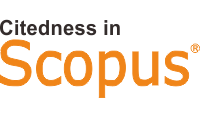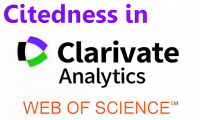About Scholarly Works in the Field of Islamic Economic Law: A Visualization of Related Topics
DOI:
https://doi.org/10.46870/milkiyah.v2i1.267Keywords:
Islamic Economic Law, Article, Citation, Bibliometric, MappingAbstract
Understanding issues raised in academic literature is a critical step in developing scholarly works in the field of Islamic economic law. This study aims to explore the topics and trends in the field of Islamic economic law in the last three decades, from 1992–2021. The data used in this study were online published articles from 1992 to 2021. Harzing’s Publish or Perish (PoP), VOSViewer, and Open Knowledge Maps were tools utilized for processing and analyzing the data. 169 articles were retrieved by applying the keyword and title word "Islamic Economic Law" in the Google Scholar database. The result of the study shows an increasing trend in the publication of scholarly works for the past thirty years, with 645 citations. As a result of the visualization, the topic of Islamic economic law tends to be designed in the context of theory, implementation through a case study approach, perspectives, a paper review elaborating the contract, and research in the field of Islamic law for economics. Islamic economic law areas recently attract an increasing number of attention from scientists, so related topics can be developed wider by various methods.
References
Agnes, F. (1996). Economic Rights of Women in Islamic Law. Economic and Political Weekly, 31(41/42), 2832–2838. http://www.jstor.org/stable/4404686
Anglin, G. J., & Morrison, G. R. (2000). An analysis of distance education research: Implications for the instructional technologist. Quarterly Review of Distance Education, 1(3), 94–189.
Anugwom, E. E. (2008). Contested terrain: economic migration, Islamic Sharia law and ethno-religious conflict in Nigeria. African Study Monographs, 29(4), 159–181. https://jambo.africa.kyoto-u.ac.jp/kiroku/asm_normal/abstracts/pdf/29-4/anugwom29-4.pdf
Bornmann, L., Butz, A., & Wohlrabe, K. (2018). What are the top five journals in economics? A new meta-ranking. Applied Economics, 50(6), 659–675. https://doi.org/10.1080/00036846.2017.1332753
Broadus, R. N. (1987). Toward a definition of “bibliometrics.” Scientometrics, 12(5), 373–379. https://doi.org/10.1007/BF02016680
Chen, X., Chen, J., & All, A. (2016). Mapping the research trends by co-word analysis based on keywords from funded project. Procedia - Procedia Computer Science, 91 (Itqm), 547–555. https://doi.org/10.1016/j.procs.2016.07.140.
Davis, N. J., & Robinson, R. V. (2006). The Egalitarian Face of Islamic Orthodoxy: Support for Islamic Law and Economic Justice in Seven Muslim-Majority Nations. American Sociological Review, 71(2), 167–190. https://doi.org/10.1177/000312240607100201
El-Ghazali, A. H. (1994). Profit versus Bank Interest in Economic Analysis and Islamic law. Islamic Research and Training Institute, (IDB).
Farooq, M. ., & Hadi, F. (2020). Islam and Business: Beliefs, Values, and Norms. In M. Al-Shammari, M. O. Farooq, & H. Masri (Eds.), Islamic Business Administration: Concepts and Strategies (pp. 3–17). Macmillan.
Ghori, S. (2020). Profit Maximization in Islam. International Journal of Islamic Banking and Finance Research, 4(2), 31–37. https://doi.org/10.46281/ijibfr.v4i2.767
Guo, H., Wang, B., Qiao, X., & Liu, R. (2016). A review of studies on citations and journal ranking in finance. Managerial Finance, 42(4), 303–311. https://doi.org/10.1108/MF-04-2015-0123
Haley, M. (2013). Rank variability of the Publish or Perish metrics for economics and finance journals. Applied Economics Letters, 20(9), 830–836. https://doi.org/10.1080/13504851.2012.697115
Harzing, A. . (2007). Publish or perish software. Computer Software.
Harzing, A. . (2019). Two new kids on the block: How do Crossref and Dimensions compare with Google Scholar, Microsoft Academic, Scopus and the Web of Science? Scientometrics, 120(1), 341–349. https://doi.org/10.1007/s11192-019-03114-y
Harzing, A. ., & Wal, R. van der. (2008). Google Scholar as a new source for citation analysis? Ethics in Science and Environmental Politics, 8(1), 61–73.
Hasan, Z. (1983). Theory of profit: the Islamic viewpoint. Journal of King Abdulaziz University: Islamic Economics, 1(1), 3–14.
Hasan, Z. (2008). Theory of profit from Islamic perspective. Economic Policy, 2116.
Kementerian Agama RI. (2015). Alquran dan Terjemahannya. Lajnah Pentashihan Mushaf Al-Qur’an.
Khan, A., Hassan, M. K., Paltrinieri, A., Dreassi, A., & Bahoo, S. (2020). A bibliometric review of takaful literature. International Review of Economics & Finance, 69, 389–405. https://doi.org/https://doi.org/10.1016/j.iref.2020.05.013
Malik, A. (2012). Was the Middle East’s Economic descent a legal or political failure? CSAE Working Paper WPS/2012-08, 44(0). https://www.economics.ox.ac.uk/materials/papers/12532/csae-wps-2012-08.pdf
Özdemir, M., & Selçuk, M. (2021). A bibliometric analysis of the International Journal of Islamic and Middle Eastern Finance and Management. International Journal of Islamic and Middle Eastern Finance and Management, 14(4), 767–791. https://doi.org/10.1108/IMEFM-06-2020-0277
Rasidin, M., Sidqi, I., Doli, , & W. (2020). Drop Shipping in Islamic financePerspective: E-Commerce Study Inter Marketplace Drop Ship in the Industrial Revolution Era 4.0. Nurani: Jurnal Kajian Syari’ah Dan Masyarakat, 20(1), 97–106. https://doi.org/10.19109/NURANI.V20I1.6029
Rosas, S. R., & Ridings, J. W. (2017). The use of concept mapping in measurement development and evaluation: Application and future directions. Evaluation and Program Planning, 60, 265–276. https://doi.org/10.1016/j.evalprogplan.2016.08.016
Tamadonfar, M. (2015). Islamic law and governance in contemporary Iran: Transcending Islam for social, economic, and political order. Lexington Books.
Waltman, L. (2016). A review of the literature on citation impact indicators. Journal of Informetrics, 10(2), 365–391. https://doi.org/https://doi.org/10.1016/j.joi.2016.02.007
Webber, K. J. (1997). The economic future of Afghan women: The interaction between Islamic law and Muslim culture. University of Pennsylvania Journal of International Economic Law, 24(4), 959–992.
Yasin, M. N. (2016). The pluralism of Islamic economic law: Dialectic of moslem and non-moslem in the development of sharia banking in Indonesia. Journal of Indonesian Islam, 10(1), 113–138. https://doi.org/10.15642/JIIS.2016.10.1.113-138
Yasin, N. M. (1994). Islamisation Or Malaynisation?: A Study of the Role of Islamic Law in the Economic Development of Malaysia ; 1969-1993. University of Warwick. https://books.google.co.id/books?id=UjeVGwAACAAJ
Yenice, A. C., Ozdemir, M., & Koc, A. (2022). Looking at the ‘Big Picture’ in Islamic Economics and Finance Literature: A Bibliometric Analysis of WoS Indexed Documents. Turkish Journal of Islamic Economics, 9(1), 59–93. https://doi.org/10.26414/A481
Downloads
Published
How to Cite
Issue
Section
License
Copyright (c) 2023 Milkiyah: Jurnal Hukum Ekonomi Syariah

This work is licensed under a Creative Commons Attribution-NonCommercial 4.0 International License.

















